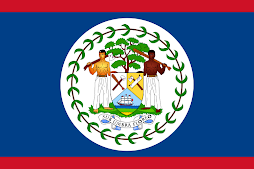Today was a lot more reviewing for the tests that will be happening in the next three days. We reviewed more number sentences and fact families, as well as fractions (comparing fractions that are more than, less than, and equal too). The kids seem to understand this information for the most part, but it still baffles me how early they are learning all this information. They reviewed math from 8:30 to break time at 10:00 am. After break, we did a language arts activity. This consisted of putting four pictures in order, and then reading the sentences to see what was happening in the story. To see if the student comprehended the story, they answered "yes and no" questions about the story. This was done until lunch, and then we played a review game for the tests tomorrow.
Yesterday we tried to play this same review game, but the students were cooperative and many

had difficulties with the task at hand. The teacher and I got to speak about this after school yesterday, and I was able to give her suggestions that might be able to assist her with these problems. This included have a "special" microphone (a marker), so each child had a chance to answer and they knew when it was their turn. Also, maybe not writing the score of the teams on the board, for this caused some students difficulties when they were not winning. The teacher did use these considerations, and the review games went with less problems. It was good to see my suggestions be useful and actually work. Especially for this class with such a great age range, differentiation is defiantly needed.
With the students getting more acquainted with me in their classroom, I was able to get to know them better. Of the six students in the classroom, there is only two true Belizean students. One student is from England, another from Lebanon, and two from around Mexico area. So in this little classroom of six, there was more diversity here than the classroom that I participated in my student teaching in the states.
Lunch for the students at Ambergris Caye is done in two
blocks. The first block is from noon until 12:45 pm. This consists of Infant I through Standard II. Standard III through Standard VI have lunch from 12:30 pm until 1:15 pm. All students eat outside the school. Students are not permitted to leave the school grounds, but families are allowed to come eat lunch outside with their child or bring lunch to them. Most students do get lunch from the school, which comes from a little "shack" right next to the school building. Lunch is made and brought in from somewhere and cost 3 Belize dollars ($1.50 American). They have a lot of the same food as in the states. Yesterday they had spaghetti and meat sauce, and today was hot dog and beans. The next two days it will be macaroni and cheese and egg salad sandwich. During this time most students grab a seat where they can find one to have lunch, and then they have a free recess time. Students here love to play futball (or soccer in the states) or volleyball. Or, many students play on the nice wooden playground that can be found in a lot of schools in the states as well.
 ementary. This day the students got to have their Easter Celebration. That previous Monday was a teacher workday, and we got to assist in the preparation for the celebration. After working on Excel for grading purposes and speaking with our partnership teacher to discuss the subjects to teach,
ementary. This day the students got to have their Easter Celebration. That previous Monday was a teacher workday, and we got to assist in the preparation for the celebration. After working on Excel for grading purposes and speaking with our partnership teacher to discuss the subjects to teach,  we started to pack Easter eggs to the brim with sweets, as they call candy here.
we started to pack Easter eggs to the brim with sweets, as they call candy here.



























